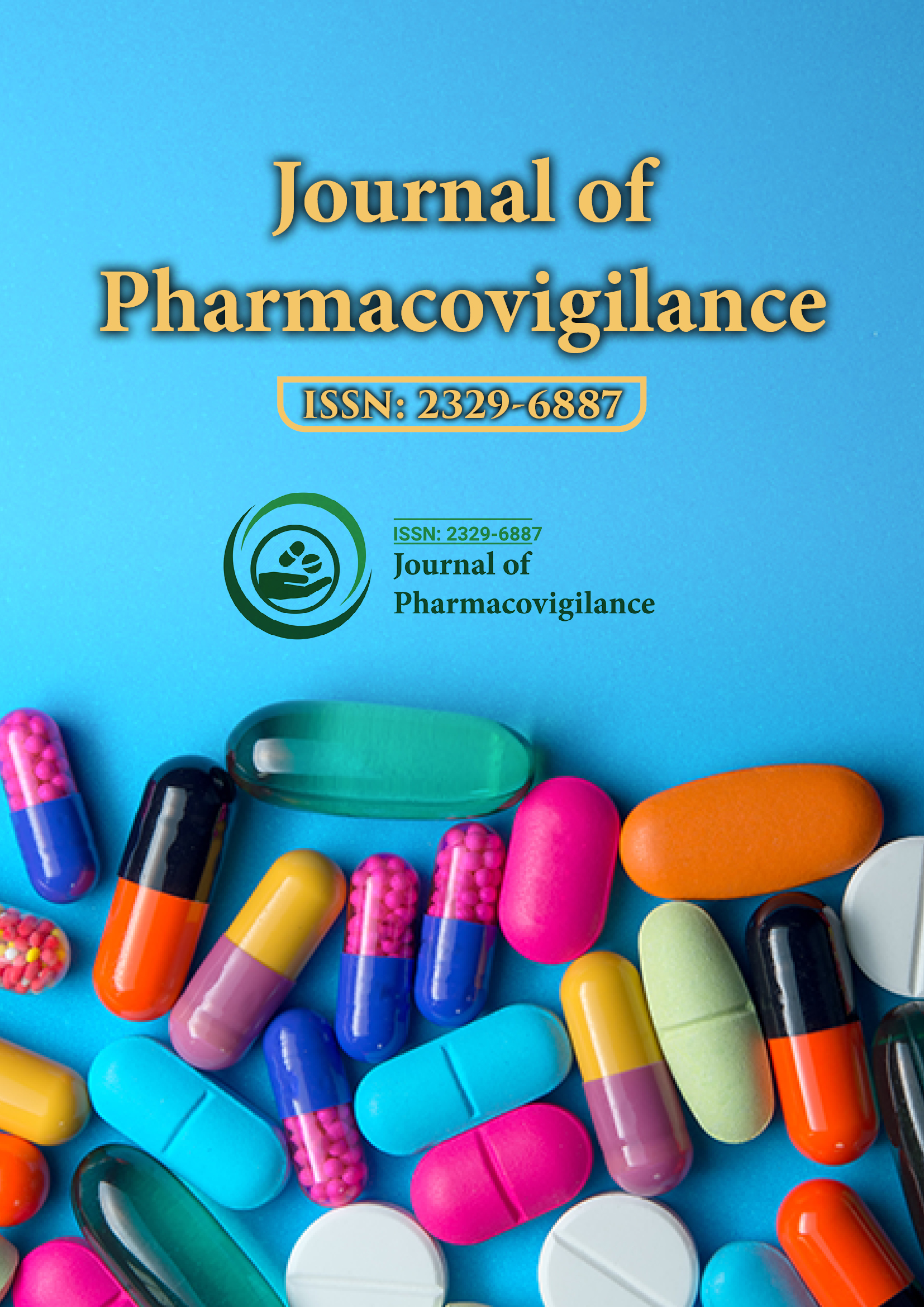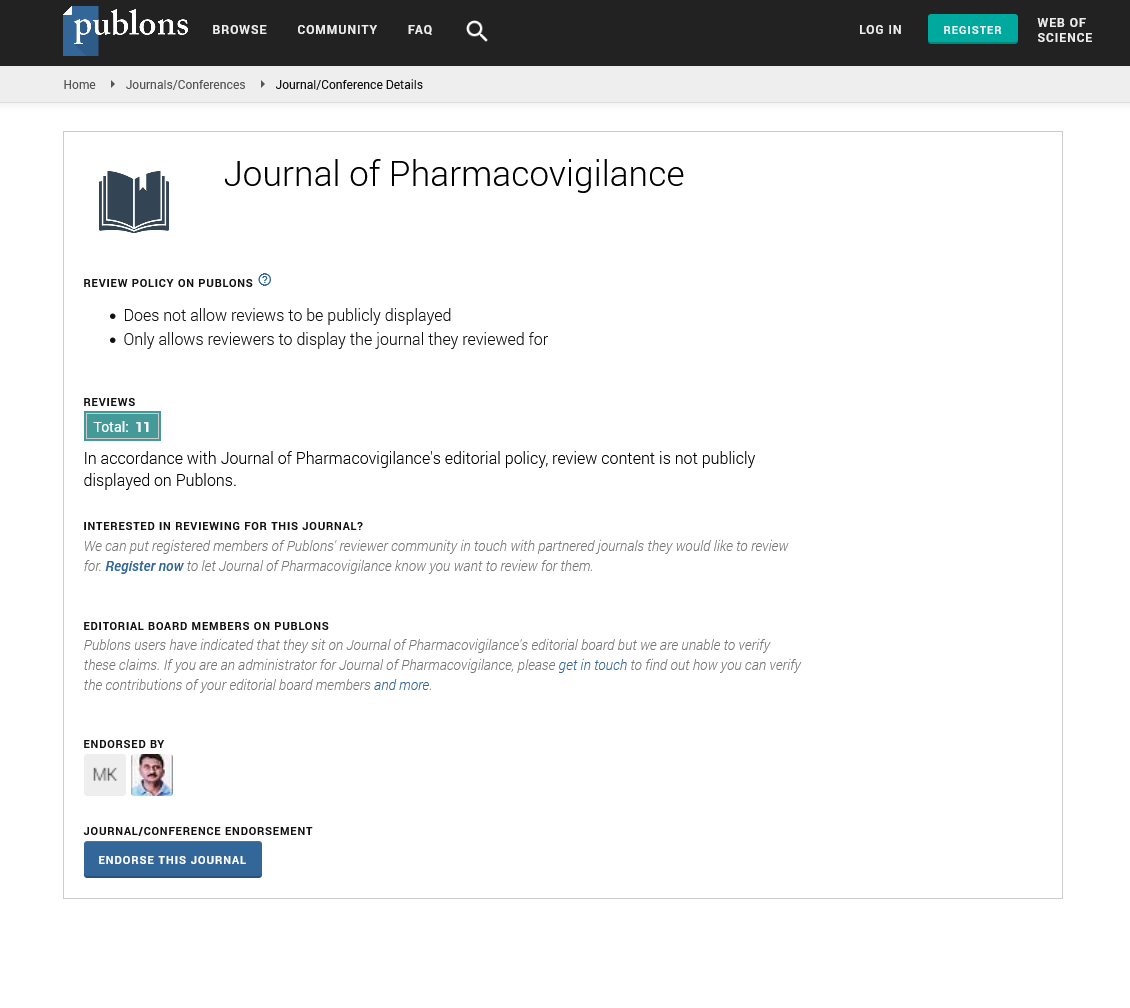Indexed In
- Open J Gate
- JournalTOCs
- The Global Impact Factor (GIF)
- RefSeek
- Hamdard University
- EBSCO A-Z
- OCLC- WorldCat
- Publons
- Euro Pub
- Google Scholar
Useful Links
Share This Page
Journal Flyer

Open Access Journals
- Agri and Aquaculture
- Biochemistry
- Bioinformatics & Systems Biology
- Business & Management
- Chemistry
- Clinical Sciences
- Engineering
- Food & Nutrition
- General Science
- Genetics & Molecular Biology
- Immunology & Microbiology
- Medical Sciences
- Neuroscience & Psychology
- Nursing & Health Care
- Pharmaceutical Sciences
Commentary - (2025) Volume 13, Issue 1
Biomarkers for Drug-Induced Liver Injury Monitoring
Leena Morales*Received: 03-Mar-2025, Manuscript No. JP-25-28632; Editor assigned: 05-Mar-2025, Pre QC No. JP-25-28632 (PQ); Reviewed: 19-Mar-2025, QC No. JP-25-28632; Revised: 26-Mar-2025, Manuscript No. JP-25-28632 (R); Published: 02-Apr-2025, DOI: 10.35248/2329-6887.25.13.500
Description
Drug-Induced Liver Injury (DILI) is one of the leading causes of acute liver failure and a common reason for the withdrawal or restriction of drugs post-approval. Despite advancements in drug safety evaluation, DILI remains difficult to predict and diagnose, largely due to the variability in individual susceptibility and the lack of specific, sensitive early detection tools. Traditional liver function tests such as Alanine Aminotransferase (ALT), Aspartate Aminotransferase (AST), Alkaline Phosphatase (ALP), and bilirubin are routinely used in clinical settings, but they often lack specificity and may not differentiate between types or mechanisms of liver injury. As a result, considerable attention has shifted toward identifying and validating novel biomarkers that can detect DILI earlier, predict severity, and elucidate underlying mechanisms.
Biomarkers for DILI can be classified into diagnostic, predictive, prognostic, and mechanistic categories. The goal is to identify molecular indicators that reflect liver injury more accurately than conventional enzymes, ideally before clinical symptoms manifest. One such biomarker is Glutamate Dehydrogenase (GLDH), a mitochondrial enzyme that is more liver-specific than ALT or AST and may indicate hepatocellular damage with greater precision. Another promising candidate is microRNA-122 (miR-122), a liver-specific non-coding RNA that circulates in the blood during liver injury. Several studies have shown that miR-122 levels rise earlier and more significantly than ALT following hepatic insult, suggesting it could serve as an early warning signal for DILI.
High Mobility Group Box 1 (HMGB1) is another biomarker gaining attention due to its role in cell death and immune activation. The acetylated form of HMGB1, in particular, may distinguish between necrosis and apoptosis, offering insight into the mechanism of injury. Keratin-18 (K18), a cytoskeletal protein released during hepatocyte apoptosis, can also be measured in both its full-length and caspase-cleaved forms to differentiate between apoptotic and necrotic pathways. This mechanistic distinction could inform the course of treatment and aid in the understanding of how a particular drug is causing hepatotoxicity.
Furthermore, bile acid profiling is emerging as a biomarker class that reflects cholestatic liver injury. Alterations in specific bile acid concentrations may signal bile duct dysfunction or impaired bile flow, which are not always evident with standard liver function tests. Combined with genomic, proteomic, and metabolomic approaches, bile acid analysis provides a systems-level understanding of hepatic responses to drug exposure.
The development of these biomarkers has been facilitated by collaborative efforts between regulatory agencies, academic researchers, and the pharmaceutical industry. The Predictive Safety Testing Consortium (PSTC) and the Drug-Induced Liver Injury Network (DILIN) have played central roles in biomarker discovery and validation. These groups work toward regulatory qualification of novel biomarkers by ensuring analytical validity, clinical relevance, and reproducibility across different settings.
Despite these advances, several challenges remain. A major hurdle is the need for large, well-characterized patient cohorts to validate biomarker performance across populations and drug classes. Biomarker levels can also be influenced by factors such as age, sex, comorbidities, and concomitant medications, complicating their interpretation. The development of multiplexed assays and machine learning models that integrate multiple biomarkers and clinical variables may help overcome these limitations and improve diagnostic accuracy.
Another concern is the translation of biomarker research into clinical practice. While some biomarkers like miR-122 and GLDH have shown strong potential, they are not yet widely available for routine clinical use. Regulatory pathways for biomarker qualification must be navigated carefully, with clear guidance on intended use, assay standardization, and data interpretation. The cost-effectiveness of incorporating advanced biomarkers into routine monitoring protocols also requires evaluation.
Nevertheless, the future of DILI monitoring appears increasingly reliant on biomarker-based strategies. With advancements in high-throughput screening technologies, digital health tools, and personalized medicine, it is conceivable that biomarker panels will become standard practice in early-phase clinical trials and post-marketing surveillance. These tools could enable earlier detection, risk stratification, and tailored interventions, ultimately enhancing patient safety and preserving therapeutic options.
Citation: Morales L (2025). Biomarkers for Drug-Induced Liver Injury Monitoring. J Pharmacovigil. 13:500.
Copyright: © 2025 Morales L. This is an open access article distributed under the terms of the Creative Commons Attribution License, which permits unrestricted use, distribution, and reproduction in any medium, provided the original author and source are credited.

